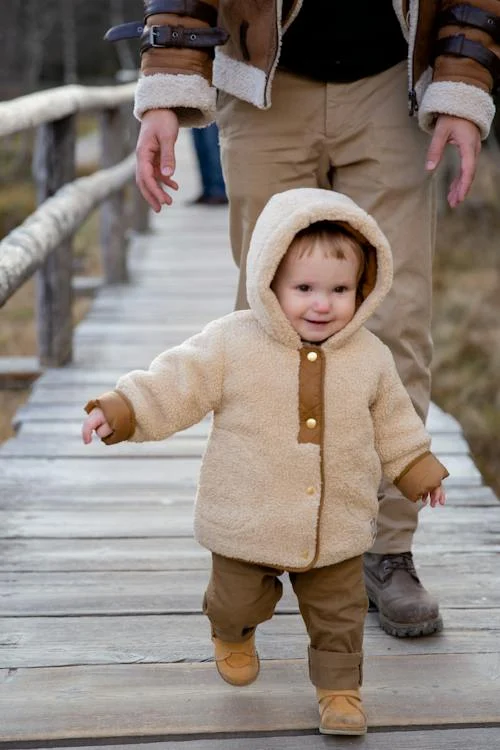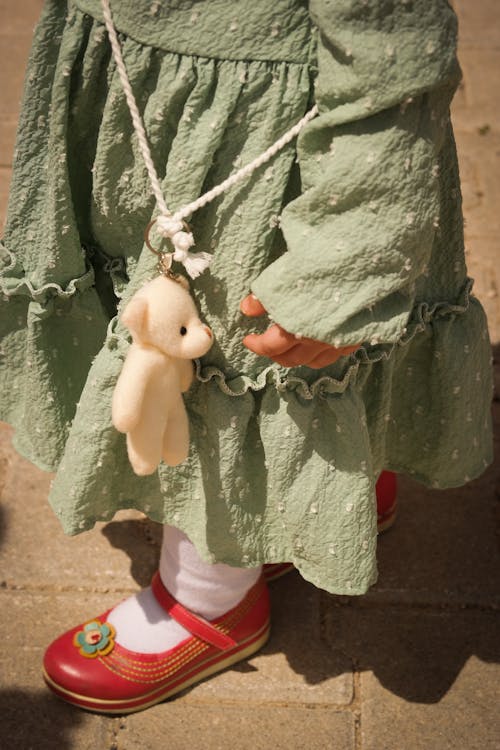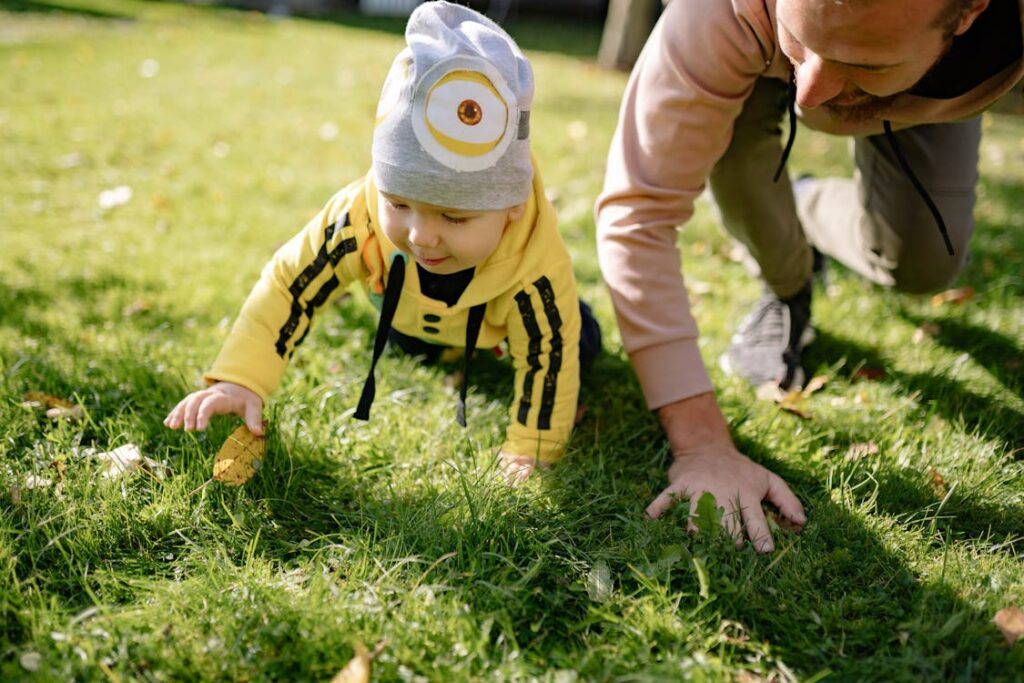There are many baby walking shoes out there, let’s explore! Imagine sitting on your living room floor, surrounded by toys and the chaos of being a parent. Then, your little one suddenly decides to face the world, one tiny step at a time. There’s that heart-stopping moment when they lift themselves, hands grabbing everything steady, and then… something happens. The first unsure steps. It’s a combination of holding your breath and cheering them on all at once. And in that moment, amidst the chaos and laughing, you realize you are witnessing something magical: the start of their adventure into the big wide world. It’s messy, wonderful, and everything you’ve ever wished for. We know your main priority is keeping your baby safe at all times, but how can you protect them from the elements when shoes are considered taboo? You follow our guide! Look at what you should know when buying your baby their first pair of baby walking shoes.
Table of Contents
When Should My Baby Start Wearing Shoes?

- You might need to get your baby shoes as soon as they take their first steps. Remember that you don’t want to obstruct a crawler’s or walker’s natural motions.
- The American Academy of Pediatrics (AAP) states that when children first learn to walk, they should use their heels for stability and their toes to hold the ground. Therefore, it is advisable to keep your child barefoot whenever feasible at home to encourage normal foot development. The little muscles in your baby’s feet can grow and get stronger when you help them find their balance.
- When they first start to walk, your baby will also probably wobble a lot. Putting heavy shoes between their feet and the ground will be disastrous. It will also be more challenging for children to grasp walking and maintain their balance.
- When your child walks indoors and outside independently, consider getting them their first pair of regular shoes. Look for the most natural and flexible alternatives for tiny feet.
Choosing Baby Walking Shoes
When finding the perfect pair of baby walking shoes, there’s a checklist to keep in mind.
- First up, comfort is vital. Look for shoes made of soft materials that won’t irritate your little one’s skin but still fit without squeezing too tight. Then, there’s protection because toddlers are professional tumblemakers. Opt for shoes with solid support to cushion those inevitable falls.
- Materials matter, too. Make sure the shoes are sturdy and easy to clean because, trust me, they’ll see their fair share of spills and splashes. And, of course, the fit is crucial. You want shoes that aren’t too tight or loose to prevent tripping hazards. Plus, easy-on, easy-off shoes are lifesaving when wrangling a wiggly baby, so skip the fancy laces and straps.
- Support is a biggie, especially when those tiny tootsies find their footing. Look for shoes that provide good arch support and flexibility, especially in those early months when their little bones are still taking shape. And hey, let’s remember style! With so many cute options, you can find the perfect pair to match every outfit, and even babies deserve to rock some killer kicks.
- The different types of baby shoes. Soft-soled shoes are great for newborns and crawlers, allowing their feet to move and flex naturally. As they shuffle around, it’s time to switch to more rigid soles for that extra stability. And remember pre-walkers, those clever little shoes with grippy bottoms and soft soles that help steady those shaky first steps.
- Last but not least, petite sizing. Baby shoe sizes can be tricky, so it’s worth measuring those tiny toes to ensure you get the perfect fit. And when in doubt, go a smidge bigger. Those little feet grow faster than you’d think!
Shoe Recommendations from the American Academy of Pediatrics
When it comes to child shoe guidelines, the AAP suggests the following:
- Choose flexible and lightweight shoes to support natural foot movement.
- Opt for shoes made of mesh or leather for breathability.
- Look for rubber soles to provide traction and prevent slipping.
- Avoid shoes that are too rigid or tight to prevent foot deformities, weakness, and reduced mobility.
- Consider the barefoot model while choosing shoes for kids.
- Since kids are involved in more high-impact activities, shoes should have robust soles and good shock absorption potential.
What Type of Baby Walking Shoes are Best?

When it comes to baby shoes, there’s no one “best” type. It’s all about your baby’s needs and what you’re going for.
Some popular baby walking shoe styles are:
- Booties: These slipper-like shoes cover the baby’s entire foot, keeping it warm and cozy. They’re perfect for chilly days when you want to ensure those toes stay snug and protected.
- Sandals: When the temperature rises, sandals are the way to go. Their open-back design lets your baby’s feet breathe, making them ideal for hot weather. Plus, they’re super cute and stylish for sunny days out.
- Mary Janes: Often decorated with ribbons or other jewelry, they’re a sweet and elegant choice for dressier occasions or add charm to everyday outfits.
- Sneakers: Sneakers are a must-have for any little one on the move. Whether they are at a crawling age, cruising, or taking their first steps, sneakers provide the support and comfort needed for all their adventures, from playdates to playgrounds.
- Soft Soles: Soft-soled shoes are perfect for babies just starting to explore the world on their own two feet. These shoes allow your little one to feel the ground beneath them, helping to improve balance and coordination as they navigate through those early milestones.
How To Measure My Baby’s Shoe Size?
To measure your child’s foot size:
- Use a flexible measuring tape.
- Wrap it around the widest part of their foot behind the toes, keeping it snug but not tight.
- Record the length and refer to a shoe size chart for the correct fit.
- When their foot is in between sizes, choose the larger one.
Shoes should feel snug when new, as they will stretch with wear. Regularly check your child’s shoes (at least monthly) to ensure they fit comfortably. There should be about a finger’s width of space between the tip of their big toe and the inner edge of the shoe.
Please have your child stand up in both shoes to ensure they stay on without slipping when they walk. Well-fitting shoes keep your child’s feet comfortable, allowing them to explore and adventure easily.
Crawling Age and All

There’s nothing like watching our little ones achieve new milestones and picking out their first pair of shoes. It’s a momentous occasion for sure. As you shop, remember your child’s age, how much they’re on the move, and what they like.


